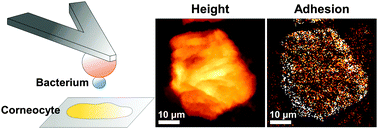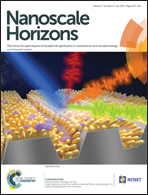Forces between Staphylococcus aureus and human skin
Abstract
Characterization of the molecular interactions between microbial cells and the human skin is essential to understand the functions of the skin microbiome, and to gain insight into the molecular basis of skin disorders. Although various molecular approaches have been used to study microbe–skin interactions, the underlying molecular forces were not accessible to study. Here we present a novel atomic force microscopy approach to localize and quantify the nanoscale interaction forces between the bacterial pathogen Staphylococcus aureus and human skin. A method combining nanoscale multiparametric imaging with single bacterial probes is developed to map simultaneously the topography and bacterial-binding properties of corneocytes at high spatiotemporal resolution. Further quantification of the forces between bacteria and corneocytes is achieved using single-cell force spectroscopy. The results show that the S. aureus–skin adhesion is strong (∼500 pN) and originates from multiple specific bonds between adhesins on the bacterial cell surface and target ligands on the corneocyte surface. Applicable to a wide variety of microbes and skin cells, our methodology offers exciting prospects for understanding the molecular details of skin colonization and infection.


 Please wait while we load your content...
Please wait while we load your content...